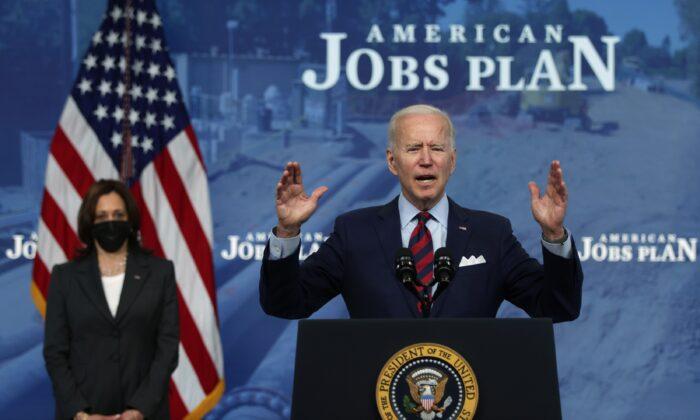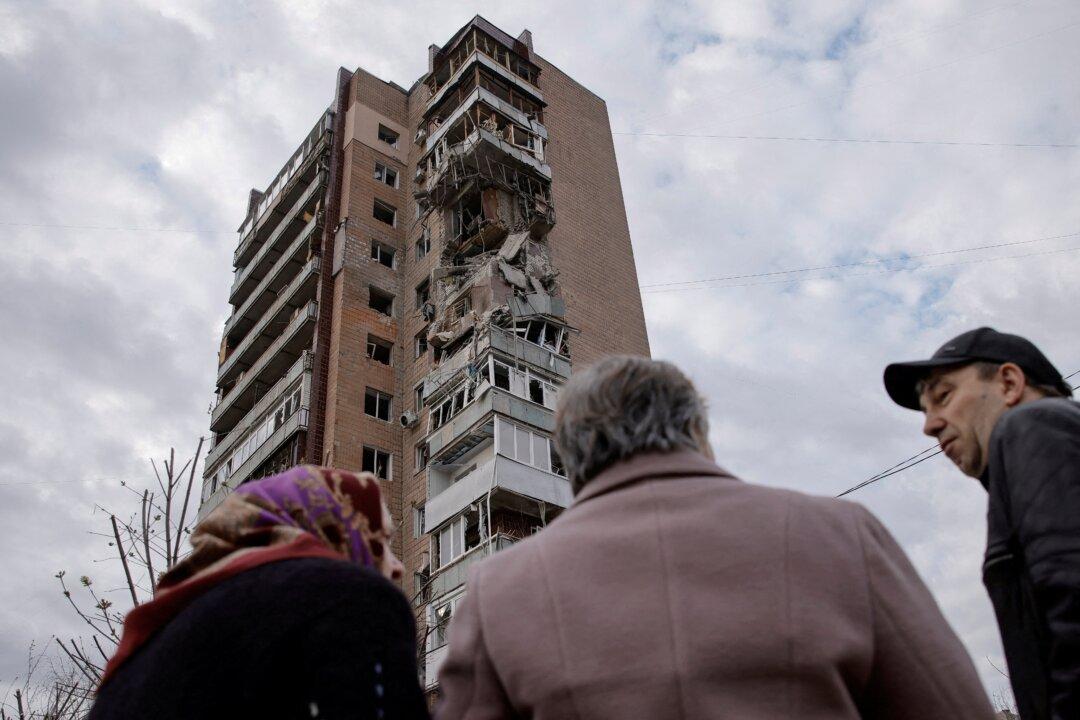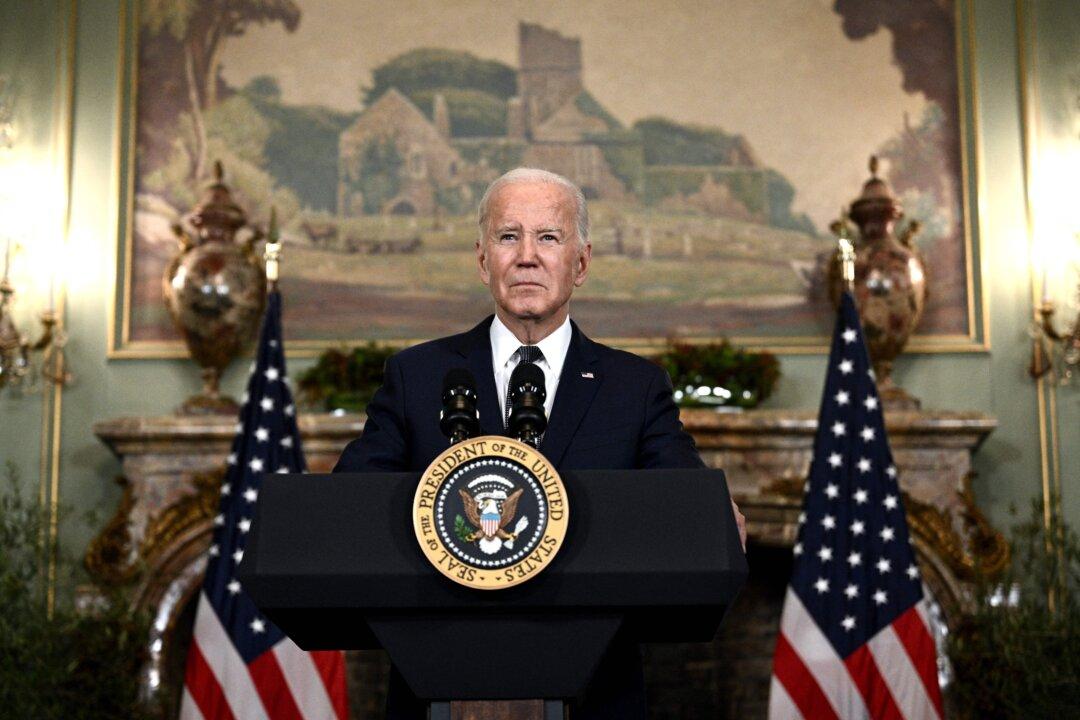Commentary
In the early spring of 2020, the United States began locking down citizens and businesses—such as restaurants, nightclubs, hairdressers, movies, and gyms—killing off entire sectors.
As economic activity ground to a near halt, the government applied band-aid solutions in the form of economic stimulus that would temporarily and partially mitigate the negative impact on the economy while doing long-term damage. The lockdowns and stimulus caused disruptions to the supply chain, including labor supply. This has been hampering U.S. recovery from two years of misguided policies and mandates.
Starting in March 2020, the government sent out three rounds of direct payments of up to $1,200 per adult and $500 per qualifying child for families under an income threshold. In total, this amounted to $869 billion.
Additionally, federal income tax was waived on the first $10,200 of unemployment benefits received in 2020. The Child Tax Credit for children under 6 was increased from $2,000 to $3,600 and $3,000 for those under 18. The Federal Pandemic Unemployment Compensation program provided an additional $600 per week to individuals already receiving unemployment benefits.
Small businesses received up to $28,000 per employee to offset payroll tax liabilities through December 2021. Under the Emergency Capital Investment Program, the Department of the Treasury provided up to $9 billion in capital to certified Community Development Financial Institutions or minority depository institutions. The Paycheck Protection Program provided small businesses with funds to pay interest on mortgages, rent, and utilities for up to eight weeks of payroll costs, including benefits.
Under the American Rescue Plan, eligible state, local, territorial, and tribal governments could receive $350 billion in emergency funding. And the CARES Act provided up to $25 billion to air carriers for the continuation of payroll.
In total, the federal government has paid out $3.6 trillion in pandemic stimulus and promised an additional $4.2 trillion while Congress has appropriated $4.6 trillion.
The Impact
Due to the disruption in people’s schedules caused by lockdowns, as well as the enhanced unemployment benefits, employers are scrambling to find people willing to work.The Biden administration would say that the stimulus worked because 90 percent of the jobs lost during the pandemic have been restored. On the other hand, since employers cannot fill existing positions, this suggests that more than 10 percent of workers simply decided to step out of the labor market. Consequently, there are 1.8 open jobs per job seeker. Far from incentivizing a return to work, some states are still offering stimulus checks. Others are continuing with enhanced unemployment benefits, while a few are extending the moratorium on evictions.
A study released by the U.S. Department of Labor found that every $1 in wages that would have been lost during the pandemic cost the government $4.13 to save through the $808 billion Paycheck Protection Program. Between March 2020 and the end of 2021, the borrowing of the U.S. Treasury increased by over $6 trillion. In the first quarter of 2022, the Treasury expected its debt to increase by an additional $729 billion.
This all results in higher debt, higher deficits, higher inflation, and lower production. At the end of 2021, the U.S. gross federal debt stood at 137 percent of GDP. In March 2022, the country was plagued by 8.5 percent inflation.
The Congressional Budget Office predicts that GDP growth in 2023 will be extremely low at 1.1 percent and then 1.2 percent for 2024 and 2025. These figures presume that the pandemic spending, borrowing, and restrictions will end at some point, but cancelling the emergency means shutting off the flow of free money, something politicians seem reticent to do. Sure enough, on April 13, the Department of Health and Human Service extended the national public health emergency for another 90 days.
Views expressed in this article are opinions of the author and do not necessarily reflect the views of The Epoch Times.






Friends Read Free